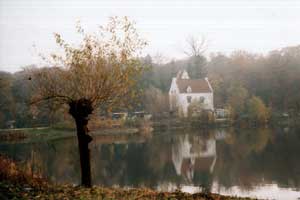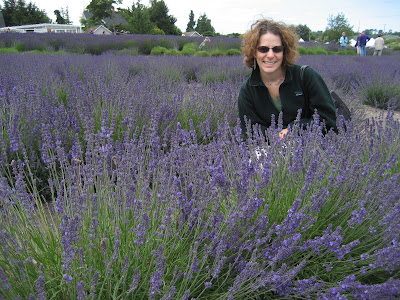
One of the best things about living in Leuven is that, despite the sardine-like way we inhabitants are crammed into its downtown streets, it doesn't take long to escape into the Flemish countryside. A friend recently suggested that I try one of a variety of walking paths that criss-cross Belgium, connecting larger cities with tiny villages that might otherwise be inaccessible to those without a car or, sacreligious as this may seem for a student living in Flanders, a bicycle. So, with little else to do on Sunday afternoon and the fall colors nearing their peak, I armed myself with a local map and set out for the little spot know as Zoet Water.
The path began just beyond the "ring road" that surrounds Leuven center. Almost immediately upon leaving the city I walked into Kasteelpark Arenberg, the beautiful grounds that is home to the Arenberg Castle, now the University School of Architecture. I could happily have ended my trip here, wandering the canals and kicking around in the leaves. Upon leaving the park I unfortunately lost the path, but with my map I headed towards Heverleebos. The forest itself is not that spectacular; it's rather bland in that northern-Michigan sort of way. But there were no cars, no students, and lots of fresh air and sunshine. After what had been nearly three hours of happy rambling, I left the forest and came out into Zoet Water.
Zoet Water, simply "Sweet Water," is a little chain of ponds nestled between Heverleebos and Meerdaalwoud. In the 50s and 60s it was a popular vacation destination, and so today this little "rural" spot is surrounded with cafes, well-worn waling paths, and a children's park complete with petting zoo and go carts. But on an autumn day in late October I only encountered a small scattering of families, solitary fishermen, and the occasional camera-wielding tourist.
Zoet Water has its share of historical sights. The most remarkable is the quaint Kapel van O. L. V. van Steenbergen. Constructed in the early 17th century, it has supposedly been the sight of a number of miracles. Today its simple altar is adorned with carvings of tree branches and flowers, reflecting the feel of the forest in which it is nestled.
Rather than take the woods-y way back, I headed up the roads back towards Leuven. After I was beginning to think I had made a wrong choice (cars, no interesting shops) I stumbled across a little roadside Marian shrine. It was magnificent. It was covered in vines and so close to the road that I almost mistook it for someone's shed or overly-ornate mailbox. But it was a well-cared-for shrine, recently decorated with flowers and lit candles. On the whole signs of Belgian Catholicity are difficult to find outside of cathedrals and universities, and today most Belgians do not actively practice. This was an interesting reminder that Belgium was once as intensely Catholic as its Mediterranean neighbors.

No comments:
Post a Comment